
views
General Plot Tropes
The generic self-insert protagonist lets viewers walk in their shoes. One of the most common tropes in anime, especially isekai or shojo, is to make the character a generic blank slate who doesn’t have much of an identity. This is done so the viewers can project themselves onto the character and live vicariously through them. Although it can be beneficial for the viewer, this trope often leads to shows with bland, boring main characters.
Practically every anime character shouts their attack name. This is something that is super common in anime, especially battle shonen where most characters have special attacks that they want to show off. Before using their attack, a character will shout a long (sometimes comically long) attack name for no particular reason. Even though it’s fairly random, this trope never fails to build hype. In manga, attack names are used to emphasize the power and uniqueness of one’s ability.
Characters often undergo transformations and gain new abilities. Transformations have been popular in fiction for hundreds of years. In anime, characters tend to undergo powerful transformations that are equipped with long sequences detailing each change. These transformations usually come with a power boost and new appearance, which often builds hype for what’s to come. One of the most popular transformation scenes in anime is when Goku transformed into a Super Saiyan against Frieza during Dragon Ball Z’s Namek Saga.
Characters often receive a weapon with unique hidden powers. In anime, especially shonen, characters tend to receive a special weapon that has hidden powers and abilities that are unique to the wielder. These weapons tend to be commonplace in-universe, but the main character’s weapon often has a rare ability that puts them above other characters. Think of Ichigo’s zanpakuto (basically a special sword), Zangetsu, from Bleach, Tanjiro’s Nichirin Sword in Demon Slayer or cursed tools from Jujutsu Kaisen. This trope is taken a step further with Bankai in Bleach, which is when a character releases the inner abilities of their zanpakto, which reflect the wielder’s true nature.
Some main characters are just ridiculously overpowered. This is a common, fairly recent trope. Rather than having the character grow stronger over the course of the show, they start off incredibly powerful without having to do much work. These characters are especially common in isekai, which is a genre where a character is transported to a new, unfamiliar world. Some examples of overpowered main characters include Ainz Ooal Gown from Overlord and Cid Kagenou from The Eminence in Shadow.
Characters tend to have a tragic backstory that fuels their resolve. There are characters with tragic, traumatic backstories all over shonen anime. The typical tragic anime backstory is that a cataclysmic event either took a character’s parents away from them or caused them to feel ostracized or unwelcomed in their community. As a result, they carry a lot of unresolved trauma and baggage that they unpack over the course of a story. Naruto: Shippuden relies on this trope a lot, whether it be with the murder of Naruto’s parents by the demon fox, Kurama, or Obito Uchiha being crushed under a boulder, then watching his best friend kill his love interest. Haikuryuu Ren’s backstory in Magi: The Labyrinth of Magic is also tragic, as he is a former prince who was caught in a fire during a revolt against his father. He also saw his brothers die after learning that his mother was behind the revolt.
Anime protagonists often have parents who died early or aren’t around. This is a common trope, especially in shonen anime. Protagonists like Naruto Uzumaki from Naruto, Ichigo Kurosaki from Bleach, and Tanjiro from Demon Slayer have all lost either one or both parents due to a sickness or attack from an evil creature. This loss is usually a world-defining moment for the character, as they are forced to navigate the world without a parent’s guidance.
Oftentimes, teenagers have to step up and save the world. While there are usually plenty of adults who can step up to the plate, anime tends to rely on teenage protagonists to shoulder the responsibilities of their world. Although many adults have power greater than the teenage hero, like Satoru Gojo in Jujutsu Kaisen or Byakuya Kuchiki in Bleach, they tend to take a backseat to the protagonist. This is likely because anime’s target audience are teenagers themselves.
Ridiculous power scaling. A hero usually gets a power-up that dramatically tips the scales of a battle. The ridiculous power scaling trope is a staple across anime. During or in preparation for an intense battle, the main character(s) often increase their power dramatically so that they’re able to take on any looming threats. It can get ridiculous, though, like when everyone started to receive the magical Sharingan eyes in Naruto: Shippuden even though the clan who they belonged to had died. When executed well, this looks like Vegeta and Trunks’ power-up against Semi-Perfect Cell in Dragon Ball Z.
Random, inconsequential filler episodes are common in older anime. In older anime, filler episodes were used to maintain a weekly airing schedule on television. In times where the manga needed to catch up with the anime, filler episodes were used to maintain viewership. These were often episodes that had no real consequences on the overarching story, typically featuring characters getting into casual shenanigans, like learning typical worldly skills. One example of a filler episode is when Chi-Chi made Goku and Piccolo learn how to drive in Dragon Ball Z. One of the most infamous filler arcs in anime is The Bount Arc in Bleach.
Beach episodes are practically an anime tradition. In many anime, there tends to be an episode that grants the characters a break from the story by having them visit the beach. This exciting outing serves as a way for characters to recharge while giving viewers a break from the main plot. Beach episodes tend to feature characters having fun, building sand castles, and splashing each other in the water.
Explaining powers in the middle of a battle. When someone has the upper hand, they blurt out how their powers work. This trend is extremely common in anime and tends to serve as exposition. Despite its purpose, many anime fans still joke that it is a poor thing to do, as it often leads to someone revealing a crucial weakness about their ability that the protagonist later exploits. This is a common trope in The Law of Ueki.
Before a big moment, a character has a deep, emotional flashback. This trope is all over anime, especially shonen. Usually right before a huge, decisive moment, like the deliverance of a final blow, a transformation, or a character’s death, there’s a deep, emotional flashback that explores the character’s backstory and maps out how they got to this moment. If a character who doesn’t get a lot of screen time suddenly has an episode dedicated to them that’s mainly an emotional backstory, it’s a good sign that they’re about to die. An example of this trope is in Jujutsu Kaisen when Nanami had flashbacks about his life before returning to jujutsu sorcery right before his death.
The hero is almost defeated, then they get a secret power-up. This trope happens all over anime. Picture this, the villain has the hero on their last legs. The fight has been mostly one-sided in favor of the villain, and before they deliver the final blow, the hero miraculously remembers their inner power and uses it to turn the tides of the battle. By the end of the battle, the hero has gained a new ability and taken down the villain who’s had them on the ropes this whole time. This trope is often paired with the Emotional Flashbacks Before a Big Moment trope, where characters have a deep flashback before finding the strength to defeat the villain. This trope often coincides with the ridiculous power scaling and transformation tropes.
Time skips pick up years later, often with new plots and abilities. In time skips, the main story is picked up on years later, making you wonder what new abilities and powers the characters have obtained. They often take years worth of character progression and skip over it, creating a unique opportunity to introduce new powers, transformations, and character growth throughout the course of the story. Some examples of time skips include the jump from Naruto to Naruto: Shippuden and the jump from Attack on Titan season 3 to season 4, which even shifted genres.
Tournament arcs help introduce new characters and compelling narratives. In many anime, tournament arcs are used to test the characters’ abilities, introduce new characters, and ramp up the stakes of the story by creating compelling, heartfelt narratives that give depth to the characters. They also create hype thanks to the uncertainty of who’s going to win, making for exciting, dynamic stories. Some iconic tournament arcs include the Chunin Exams in Naruto and The Dark Tournament Arc in Yu Yu Hakusho. Tournament arcs often feature some of the most exciting fights in the show.
Training arcs help set up character progression and build up a fight. Training arcs often precede an exciting and/or pivotal fight within the story. They serve as an opportunity for the character to flesh out their abilities, develop physically and mentally, and tend to offer worldbuilding that makes for a more compelling story. Some training arcs tend to go on for too long, which can drag things out and take away from the story’s primary objective. Some iconic training arcs include Goku and Gohan training in the Hyperbolic Time Chamber before Dragon Ball Z’s Cell Games and Naruto’s visit to Mount Myoboku in Naruto: Shippuden
The power of friendship. Occasionally, the main character’s friends are crucial for the win. When the power of one person isn’t enough to beat the villain and save the world, their friends come in to help save the day, as the bond between them is stronger than anything. This is prevalent in anime that are geared towards younger audiences, like Sailor Moon, as it emphasizes community and strength in numbers. This trope even rears its head in Dragon Ball Z, when Vegeta fires an energy blast at Cell during his beam clash with Gohan, which helped secure the victory.
The hero and villain team-up. Sometimes, the hero is forced to team up with their worst enemy. In this trope, the hero is often backed against a corner and doesn’t have the strength to take on the challenge they are presented with, at least by themselves. This forces them to turn to their worst enemy, as their power is great enough to put aside differences and work together to achieve a common goal. Goku and Frieza teaming up in Dragon Ball Super’s Tournament of Power is a great example of this trope.
Anime tends to constantly be set in high schools. Even when the stakes of the anime are world-ending, a good chunk of shows take place in the confines of a high school. Since a majority of anime viewers are in high school themselves, shows tend to be set there. They often tackle relatable high school issues, like bullying, social anxiety, and peer pressure. Shows that are set in high schools include My Hero Academia, Komi Can’t Communicate, and Hyouka Some shows skate on the high school trope by including it as one of a few settings, such as Bleach and Yu Yu Hakusho.
The absurdly powerful student council. In high schools, the student council can usually do almost anything. While student councils tend to be boring in real life, they are often overwhelmingly powerful in anime. They usually have power over students, teachers, and can even bend or shape school rules as they wish.
The harem trope. Harem anime involves a male main character being surrounded by women. Harem anime typically follows a male main character as he is pursued by multiple attractive women, all of whom compete for his time and attention. This trope can teeter on problematic, especially when it reduces the female characters to one-dimensional love interests who don’t have much depth.
Inner monologues are used to give insight into what a character is thinking. Thought bubbles are often used in manga to convey a character’s thoughts to the reader, so to adapt, anime tends to lean on inner monologues. These monologues are set over scenes where time ceases to exist and the background gets colorful or dark. It can make for striking storytelling that is filled with depth, like when Light and L would face off in Death Note.
Training montages are often used to save time and story development. The main character is usually in a time crunch and needs to learn extraordinary skills in order to complete their goal. Instead of taking the proper amount of time to learn these skills (which are sometimes nearly impossible to obtain), the main character undergoes a quick, extreme training regiment that is usually compressed into a brief sequence or montage. This typically ramps up the exposition and prepares the character for larger, more difficult battles. Think of Vegeta’s training in under 300x gravity leading up to Dragon Ball Z’s Android Saga.
Some anime rely on random exposition to get the story across. Sometimes, anime tells you what’s going on instead of showing it. In some cases, anime goes against the grain and decides to tell the viewer something rather than showing it. For example, Rukia Kuchiki has a tendency to explain the plotline in Bleach using funny, child-like drawings and extensive exposition that gets the viewer up to speed.
Dere Tropes
A tsundere often switches between mean and cold to warm and loving. In anime, a tsundere is a character who switches between cold, hostile behavior and warm, affectionate behavior, according to Cosplayer Ashley Walker. This behavior is typically geared towards the main character, who is often their love interest. The hot and cold nature of a tsundere typically makes for funny exchanges and nail-biting moments when the stakes are high.
A yandere is often violently obsessed with their love interest. According to Walker, a yandere is a character who is obsessively devoted to their love interest, often to the point of violence or other criminal acts. They are very determined to get with their love interest and are often willing to take extreme measures to do so, like putting on a soft personality to hide their obsessive nature. Think of Karin’s obsession with Sasuke Uchiha in Naruto: Shippuden
Kuuderes often appear cool and detached, but are secretly loving. On the surface, kuudere characters come off as cold, blunt, and uncaring, typically with a cool demeanor. But under the surface, these characters have a deep, caring side that they only show on certain occasions, typically when they’re around their love interest.
Danderes are shy and avoid people out of fear of saying the wrong thing. Dandere characters typically avoid people (usually their love interest) because of their shyness and fear of saying or doing something that drives them away. While they can come off as cold or unemotional, they are secretly loving and caring, but lack the confidence to openly express those parts of themselves. Over the course of an anime, a dandere usually opens up thanks to support from those around them. Think of Hinata Hyuga from Naruto or Nezuko from Demon Slayer.
Bakaderes are innocent and well-meaning, but embarrass themselves. In anime, a bakadere is a character who is simple-minded and usually well-intentioned, but embarrasses themselves by behaving strangely while trying to impress someone, often their crush. Although they usually fail in trying to impress someone, they garner love and appreciation from anime fans everywhere.
A hiyakasudere teases their love interests with flirty remarks. There are many dere types in anime, with hiyakasudere being fairly common. With this trope, the character tends to be playful and often teases the main character with suggestive, flirty remarks. These remarks tend to play on their true attraction, which develops with honesty and vulnerability over the course of the story. Think of characters like Lucy Heartfilia from Fairy Tail, who flirts with enemies to get out of trouble and playfully teases Natsu because of her feelings for him.
Anime Character Tropes
Some female side characters rough up the male main character for gags. In anime like Bleach, there is often a female side character who punches or kicks the main character for saying something inappropriate or untrue. For example, when Naruto Uzumaki makes unnecessary remarks towards Sakura Haruno in Naruto, she often responds by punching him upside the head with extreme force. Another example of this trope is seen in Bleach when Tatsuki Arisawa hits Ichigo Kurosaki whenever he says something she doesn’t agree with.
The Toast of Tardiness. When a character is late for school, they tend to rush out of the house briefly into their meal, grabbing a piece of toast and stuffing it into their mouth as they leave. They usually end up running into someone and getting the toast’s toppings all over their shirt, which results in them being late. This trope was more common in anime from the early 2000s.
In many anime, there’s a woman who always tries to ship everyone. Some women in anime are obsessed with romance, whether it be bringing couples together or finding love themselves. They are typically vocal about this obsession, too, expressing it to those they’re infatuated with as well as people they believe should get together. Even if these characters are no good together, there’s often someone obsessed with romance going “Wow! They’re perfect for each other!” Characters who embody this trope include Narumi Momose from Wotakoi and Mina Ashido from My Hero Academia.
GIrls with monster or catlike features. This trope includes women with cat ears, tails, and other animal features. Whether it be because of supernatural abilities or a tendency to wear animal ears, many female characters in anime tend to have monster or catlike features, like cat ears, fangs, tails, and other animal characteristics. Some characters with these features include Yoruichi Shihouin from Bleach and The Puma sisters from Dominion Tank Police.
The little fang trope. Mischievous characters tend to have a little fang. In many anime, characters (typically women) who are on the devious and mischievous side usually have a little triangular fang in the corner of their mouths to indicate that they’re a bit of a firecracker. Think of Komachi Hikigaya from OreGairu. The little fang is also called the Tsundere fang.
The “Ara Ara” trope. This is a simple trope where characters repeat “ara ara.” “Ara ara,” which is a Japanese way to say “oh dear,” which some anime fans find attractive. The phrase itself is an interjection used to express a spontaneous feeling.
Problematic Anime Tropes
Weak female characters are often damsels in distress. Throughout many anime, especially older ones, women tend to be portrayed as weak and in need of saving. While they often have powers that would be formidable against any regular crook or criminal, they are usually overpowered by a stronger male antagonist. For example, even though Bleach’s Inoue Orihime can summon six magical fairies that have various powers, she was easily kidnapped by Ulquiorra Cifer in the Arrancar Arc.
In some anime, the child is actually a 1,000-year-old magic being. The hundred or thousand year old demon with a child’s body is a trope that draws criticism across the anime community. Since the character is technically an adult in a child’s body, some anime take liberty in putting them in situations a child wouldn’t often be in. Ms. Vampire Who Lives in My Neighborhood utilizes this trope with the character Sophie Twilight, a 360 year-old vampire in a child’s body.
The comic relief character who’s also a weirdo. These characters are played for laughs, but they’re very problematic. In some anime, it is common for an old, funny, or seemingly wise character to actually be a weird creep who attempts to get with as many women as possible, nearly assaulting them in the process. While this is often portrayed as a joke, it is extremely problematic, as it normalizes the objectification and abuse of women. Prime examples of these characters include Master Roshi from Dragon Ball Z, Jiraiya from Naruto and Sanji from One Piece.
Many anime have problematic characters who fixate on oppai. Some anime characters have a problem with obsessing over oppai, or large breasts. This problematic trope often features female characters with large breasts and revealing outfits who often have guys accidentally fall on them, groping them in the process. This problematic trend often sexualizes characters for no reason, like with Rangiku Matsumoto in Bleach.
Ecchi nose bleeds are used to express sexual arousal and excitement. In many older anime, the ecchi nose bleed is used when a character (often perverted) is aroused by a woman. This is because mangaka (manga artists) needed a way to express inner feelings and used nosebleeds to exaggerate inner excitement. This trope is problematic, as it uses the sexualization of women for a laugh. Luckily, this trope has become less prominent in modern anime.
Fan service involves sexualizing characters to appease certain fans. In some anime and manga, fan service is used to entice viewers and get them to continue watching. Fan service often involves putting characters in sexualized positions or creating situations that wouldn’t normally happen for the sake of sexualizing a character, like the main character falling into a woman’s breasts. Fan service is considered problematic because it reduces certain characters to sexual objects.










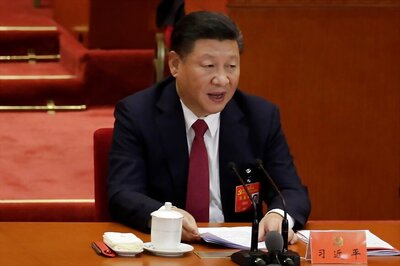
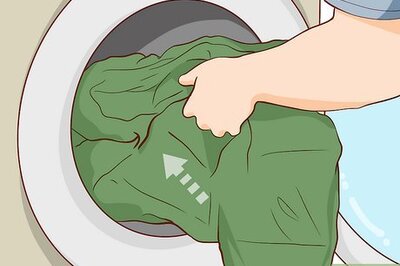
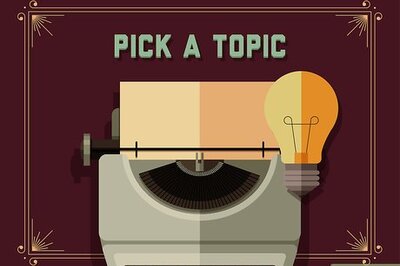

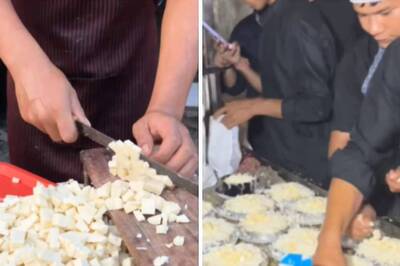
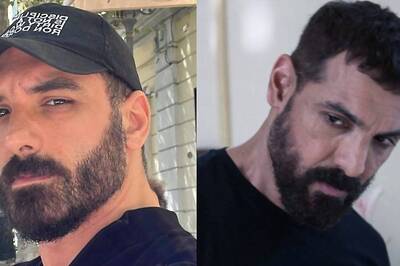
Comments
0 comment